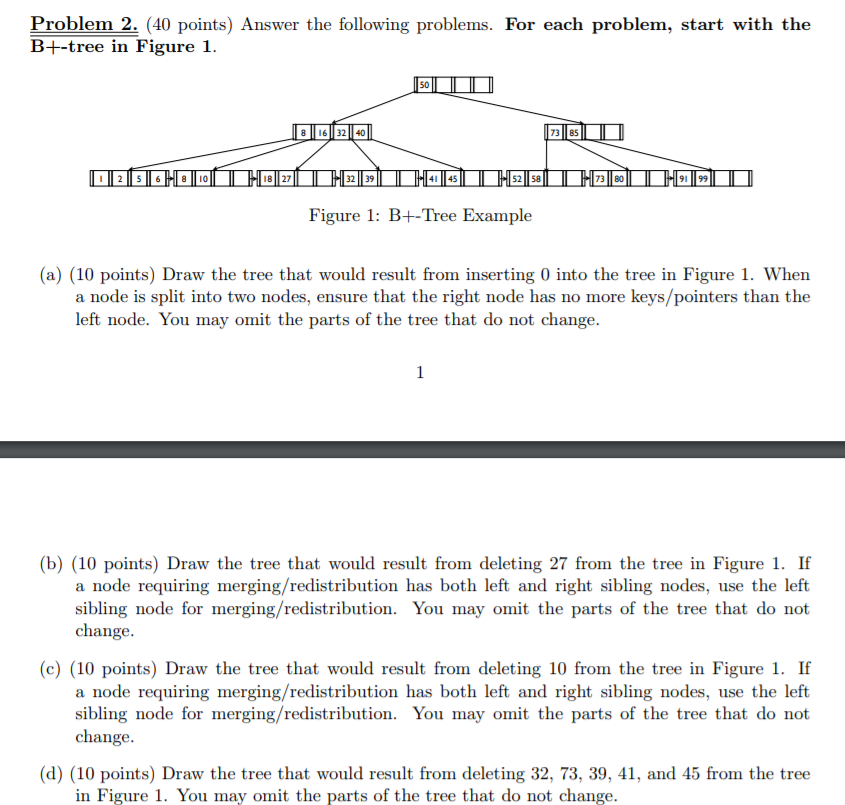Each question must be solved with regards to figure 1

Problem 2. (40 points) Answer the following problems. For each problem, start with the Bt-tree in Figure I 50 Figure 1: B+-Tree Example (a) (10 points) Draw the tree that would result from inserting 0 into the tree in Figure 1. When a node is split into two nodes, ensure that the right node has no more keys/pointers than the left node. You may omit the parts of the tree that do not change (b) (10 points) Draw the tree that would result from deleting 27 from the tree in Figure 1. If a node requiring merging/redistribution has both left and right sibling nodes, use the left sibling node for merging/redistribution. You may omit the parts of the tree that do not change (c) (10 points) Draw the tree that would result from deleting 10 from the tree in Figure 1. If a node requiring merging/redistribution has both left and right sibling nodes, use the left sibling node for merging/redistribution. You may omit the parts of the tree that do not change (d) (10 points) Draw the tree that would result from deleting 32, 73, 39, 41, and 45 from the tree in Figure 1. You may omit the parts of the tree that do not change Problem 2. (40 points) Answer the following problems. For each problem, start with the Bt-tree in Figure I 50 Figure 1: B+-Tree Example (a) (10 points) Draw the tree that would result from inserting 0 into the tree in Figure 1. When a node is split into two nodes, ensure that the right node has no more keys/pointers than the left node. You may omit the parts of the tree that do not change (b) (10 points) Draw the tree that would result from deleting 27 from the tree in Figure 1. If a node requiring merging/redistribution has both left and right sibling nodes, use the left sibling node for merging/redistribution. You may omit the parts of the tree that do not change (c) (10 points) Draw the tree that would result from deleting 10 from the tree in Figure 1. If a node requiring merging/redistribution has both left and right sibling nodes, use the left sibling node for merging/redistribution. You may omit the parts of the tree that do not change (d) (10 points) Draw the tree that would result from deleting 32, 73, 39, 41, and 45 from the tree in Figure 1. You may omit the parts of the tree that do not change







